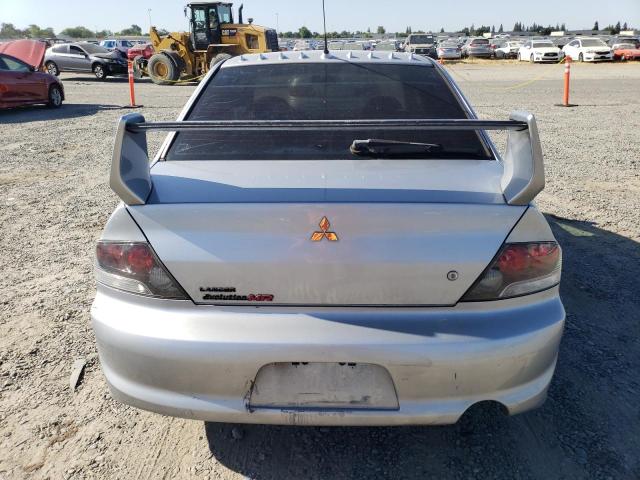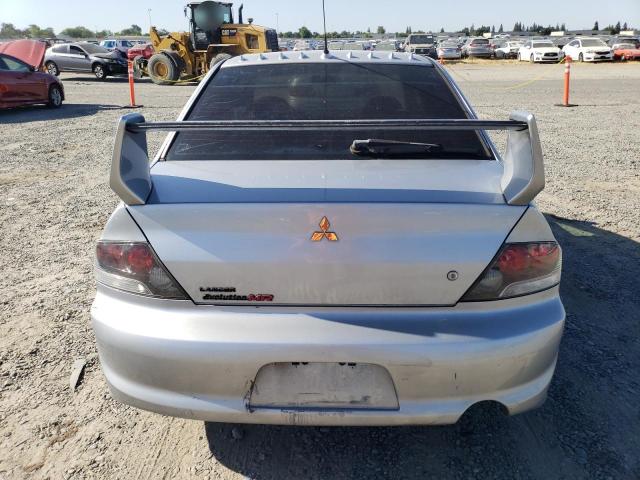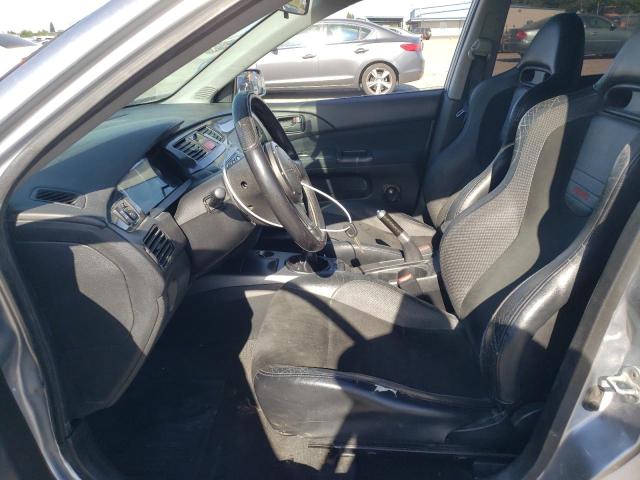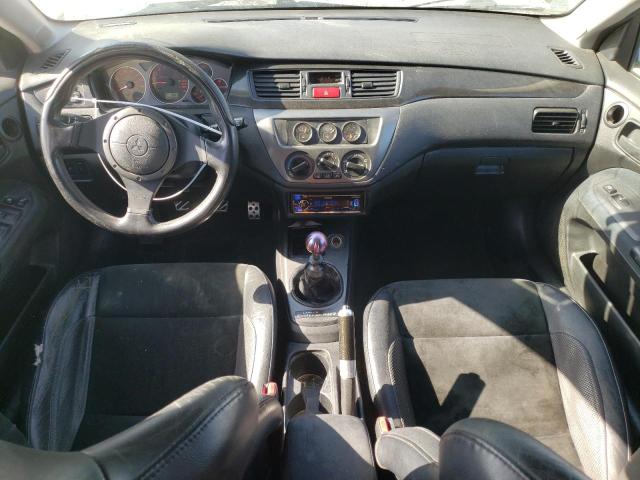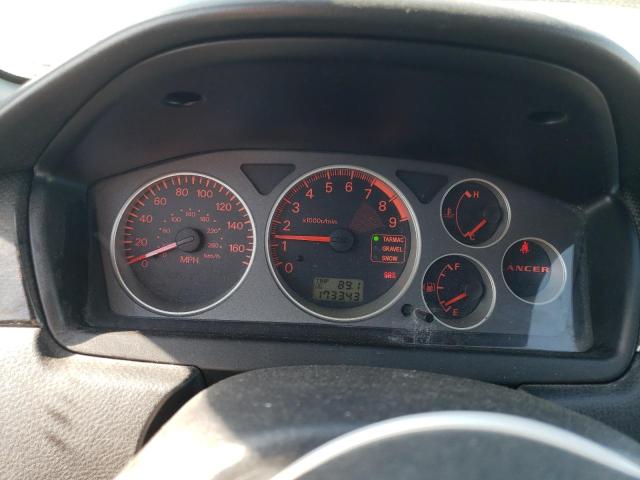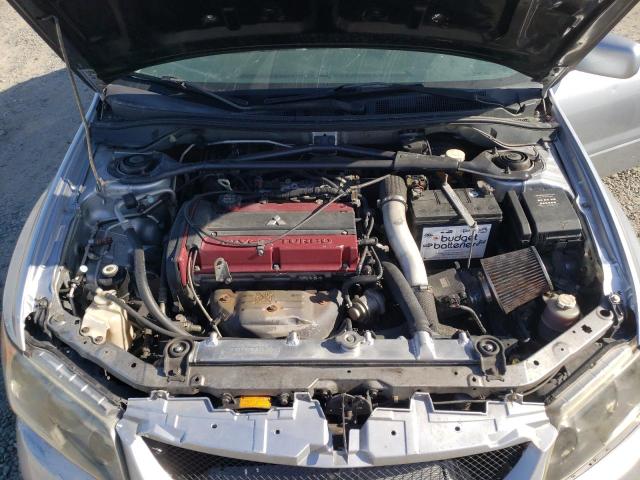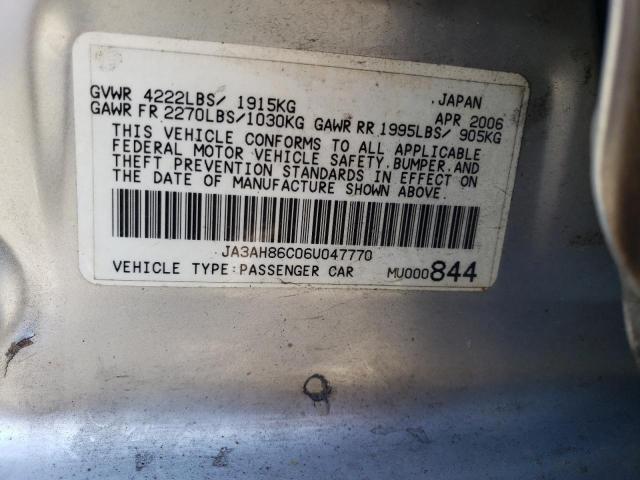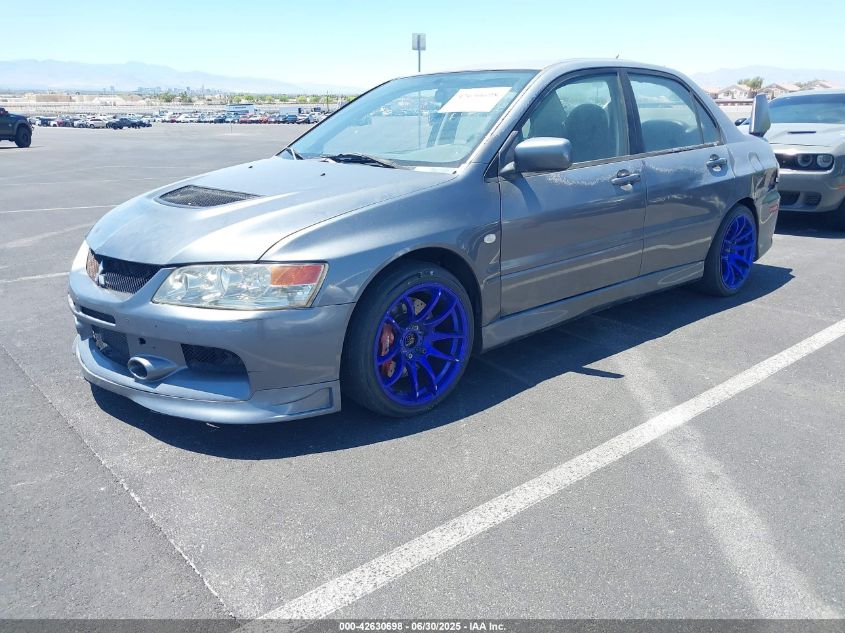2006 MITSUBISHI LANCER EVOLUTION | JA3AH86C06U047770
 ❯
❯Lot details
- Sale Date2025-06-10
- Lot Number58814255
- ACV24000 $
- LocationCA - SACRAMENTO
- Odometer173,343 miles (278,968 km)
- Primary DamageFRONT END
Vehicle details
- Make
- Model
- Year2006
- FuelGAS
- Engine2.0L 4
- TransmissionsMANUAL
- Drive TypeAll wheel drive
Vehicle specifications
3
~$40,000
Engine: 2.0L turbocharged inline-4
Torque: 392 Nm
0–100 km/h: ~4.6 s
The Evolution IX MR was a precision tool in the realm of all-wheel-drive performance sedans. With 286 hp and 392 Nm of torque from the legendary 4G63T engine, the Evo IX launched from 0–100 km/h in just 4.6 seconds. Its turbocharged 2.0L unit was mated to a close-ratio 6-speed manual gearbox and featured MIVEC variable valve timing for sharper response across the rev range.
Where the Evo truly excelled was in its cornering ability. Active Center Differential (ACD), Super Active Yaw Control (S-AYC), and a helical limited-slip front differential created unmatched grip and agility. The MR version added Bilstein dampers, lightweight BBS wheels, and aluminum roof panels to further reduce weight and lower the center of gravity. It was brutally effective on tight circuits, mountain roads, or rally stages—an AWD scalpel that made even inexperienced drivers feel heroic.
But what defined the Evo IX wasn’t just numbers. It embodied Mitsubishi’s rally heritage and served as a raw, analog performance sedan with just enough comfort to be daily-driven. Unlike German rivals, it prioritized driver connection and mechanical honesty over polish or luxury, earning it cult status among enthusiasts worldwide.
Final Bid Mitsubishi Lancer Evolution (2006)
$12,300
$18,979
$28,800
Body Styles
The Mitsubishi Lancer Evolution IX was offered exclusively as a 4-door compact performance sedan with a functional, aerodynamic silhouette. It featured a tall rear wing, vented aluminum hood, flared arches, and aggressive bumpers with integrated intercooler ducts. The body was relatively narrow but tall and boxy, optimizing airflow and visibility—its shape derived from rally homologation rather than fashion. The MR variant added subtle touches like carbon-fiber lip spoilers and optional vortex generators on the roof.
Model Name Meaning (Manufacturer)
The term “Lancer” comes from Mitsubishi’s compact sedan line, used since the 1970s. “Evolution” refers to the car’s constant iteration through performance-driven development. Each numbered generation marked a leap forward in motorsport technology, especially in rallying. The Evo IX was the final evolution of the 4G63T platform and the last to emphasize analog control before the Evo X introduced a new chassis and more electronic systems.
Model Name Meaning (Languages)
“Lancer” refers to a mounted soldier carrying a lance—connoting speed and aggression. “Evolution” signifies change, progress, and refinement, fitting for a model that improved consistently over nine generations. Together, “Lancer Evolution” suggests a car bred for battle, sharpened through engineering and motorsport success.
Body & Interior Colors and Rims
Exterior color options for the Evo IX included aggressive tones like Graphite Grey, Rally Red, Electric Blue, Wicked White, and the rare Phoenix Yellow. Some MR editions featured exclusive colors or black-painted roof panels for contrast. Finishes were typically solid or metallic, with a rally-bred emphasis on function over flamboyance.
Inside, the cabin was minimalist yet performance-focused. Recaro bucket seats came standard in black suede or Alcantara with red stitching. The dashboard and door trims were made of hard plastic, but ergonomically designed with short shifters, metal pedals, and a central boost gauge. MR variants received aluminum shift knobs, carbon-look panels, and special badging.
Wheels ranged from 17-inch Enkei cast alloys on base models to 17-inch BBS forged rims on the MR, finished in silver or gunmetal. Paired with high-performance Yokohama or Bridgestone tires and Brembo brakes, the Evo’s wheel setup was as purposeful as its drivetrain—lightweight, rigid, and designed to handle abuse.
Top Expensive Options
- Recaro SR Sport Bucket Seats: $1,500
- Bilstein Suspension Package: $1,200
- Vortex Generator Roof Fin: $600
- Carbon-Fiber Front Lip Spoiler: $1,000
- Lightweight Aluminum Roof Panel: $800
- BBS Forged Alloy Wheels (17"): $1,400
- HID Headlight Upgrade Package: $700
- Ralliart Short-Throw Shifter Kit: $500
- S-AYC Rear Differential Upgrade: $1,800
- Navigation & Boost Display Combo (Japan market): $1,100
vs Competitors
The Evo IX’s main rival was the Subaru Impreza WRX STI, offering similar AWD performance and rally heritage. However, the Evo featured a more advanced AWD system, sharper steering, and more agile handling out of the box. Compared to V6-powered rivals like the BMW 330i or Audi A4 Quattro, it lacked luxury but outperformed them on any twisty road. Even against more expensive sports cars, the Evo’s chassis composure, mechanical grip, and raw response made it a benchmark in the sub-$40k segment. It was a car that demanded commitment—and rewarded it fully.
Fun Fact
The Evo IX was the last generation to use the iconic 4G63T engine, which had been in continuous development since the first Evolution. It also marked the final appearance of a fully mechanical, analog-feeling Evo before the arrival of the Evo X with its dual-clutch transmission and heavier body. As such, the IX has become a collector’s favorite, with the MR Edition in particular commanding rising prices due to its purity and motorsport pedigree.









